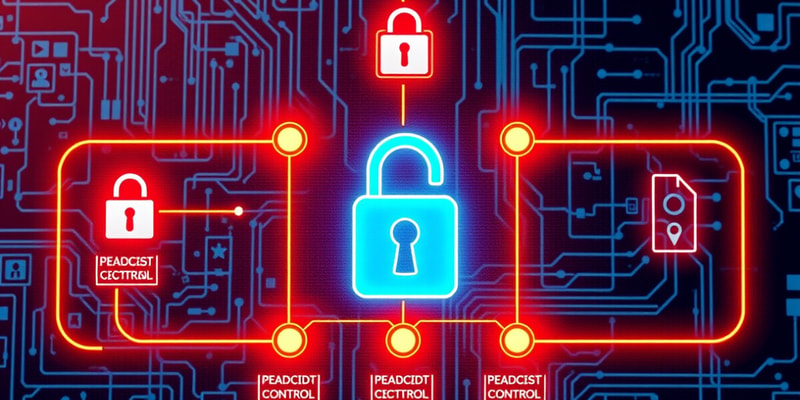Questions and Answers
What is a primary principle of the Zero Trust model?
Which principle is NOT associated with Software Defined Perimeter (SDP)?
How does the Zero Trust model alter the traditional view of trusted entities?
What process does SDP utilize for user connections?
Signup and view all the answers
What is the purpose of creating micro-perimeters in the Zero Trust framework?
Signup and view all the answers
Which of the following is a characteristic of the least privilege principle in SDP?
Signup and view all the answers
What is a key control feature of SDP in relation to device validation?
Signup and view all the answers
Which method is explicitly used in SDP for enhancing security during communications?
Signup and view all the answers
What is the primary goal of Software-Defined Perimeter (SDP)?
Signup and view all the answers
How does SDP ensure access to application infrastructure?
Signup and view all the answers
Which statement best describes the relationship between SDP and the Zero Trust model?
Signup and view all the answers
What does SDP require from users before granting access to hidden assets?
Signup and view all the answers
What function does a drop-all firewall serve in an SDP implementation?
Signup and view all the answers
Which of the following is NOT a component integrated by SDP?
Signup and view all the answers
What is required for establishing trust in the SDP environment?
Signup and view all the answers
Which characteristic distinguishes SDP from traditional security models?
Signup and view all the answers
What is the primary high-level principle shared by both SDP and Zero Trust architectures?
Signup and view all the answers
Which of the following is considered a distinctive feature of Software Defined Perimeter (SDP) compared to other Zero Trust models?
Signup and view all the answers
In what year did the U.S. Defense Information Systems Agency first initiate the program that eventually led to the development of SDP?
Signup and view all the answers
What does the CSA's SDP framework focus on?
Signup and view all the answers
Why is SDP considered 'future proof'?
Signup and view all the answers
How does SDP manage connectivity to applications?
Signup and view all the answers
Which of the following statements is true regarding SDP and ZTA?
Signup and view all the answers
What challenge is addressed by the implementation of SDP as organizations undergo digital transformation?
Signup and view all the answers
Study Notes
SDP Principles
- SDP architecture emphasizes least privilege and segregation of duties.
- Key controls include dynamic rules on drop-all firewalls to enhance security.
- Servers and services are hidden to prevent unauthorized access.
- Authentication is required before establishing connections, ensuring users are authorized on specific devices.
- Single packet authorization (SPA) and mutual transport layer security (mTLS) provide secure communication.
- Access control is fine-grained, allowing for detailed device validation.
Relationship Between SDP & ZT
- Zero Trust (ZT) is the overarching model encompassing SDP.
- ZT principle: No assumptions about trustworthiness are made when entities request resource access.
- ZT starts with no pre-established privileges, allowing privileges to be added constructively.
- ZT operates under the assumption of breach, necessitating verification of access requests for all resources.
- ZT emphasizes creating micro-perimeters around sensitive data to enhance control and visibility.
- Access requests require verification before granting permission, with continuous monitoring throughout the session.
- While SDP has different origins than ZT, both share the principle of prioritizing verification over trust.
- SDP requires users to sign in cryptographically for access to hidden assets in public infrastructures.
- SDP integrates various security controls (applications, firewalls, clients) for a unified security approach.
History of SDP
- SDP originated from the U.S. Defense Information Systems Agency's initiative in 2007 focused on cybersecurity.
- The CSA established the SDP framework in 2013, which aims to control access based on identity and device attestation.
- SDP operates using a need-to-know model, verifying device posture and identity before allowing access.
- Resources in an SDP environment are hidden without DNS information or IP addresses, making them undetectable without specific access permissions.
- As organizations pursue digital transformation, SDP addresses evolving cybersecurity threats and challenges.
Studying That Suits You
Use AI to generate personalized quizzes and flashcards to suit your learning preferences.
Description
Test your understanding of Software Defined Perimeter (SDP) principles. This quiz covers key controls like dynamic rules, server hiding, and authentication processes. Delve into the concepts that ensure security in the SDP architecture.




